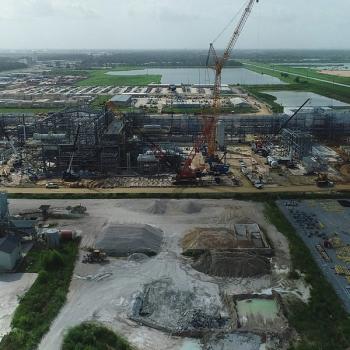
REPLACING RECIPROCATING COMPRESSORS WITH CENTRIFUGAL MACHINES
Have you ever purchased a new piece of furniture that, although you carefully measured all room dimensions, just doesn’t fit through your home’s doors? Or, a new bed is perfectly sized for your upstairs bedroom but there is no way to lift it up your narrow stairway? The obvious can easily turn into a master challenge when it comes to placement of furniture . . . and compressors.
This becomes apparent when one tries to replace reciprocating compressors with centrifugal compressors in a pipeline station. Should be easy, right? It is — unless you try to force a round peg into a square hole. Many compressor station operators replace aging reciprocating compressors that are gas engine driven with centrifugal compressors that are driven by gas turbines or electric motors. This is usually because of the difficulties encountered when trying to maintain old machines, new emissions regulations, or problems with machine availability and starting reliability. Often it is also a result of required capacity increases for the pipelines in question. And sometimes the reason is improved economics when a large number of smaller reciprocating compressors are replaced by one or more centrifugal compressors.
Since many, especially older stations, do not have the capability to measure the flow, operators usually assume that the combinations of suction and discharge pressures that were relevant in past operations should be the basis of new design specifications. A number of issues are overlooked by this approach. The most important one is that it defines a range of operating conditions that do not match the head-flow relationship that the pipeline imposes. Therefore, the designers of centrifugal compressors are forced to consider operating conditions that most likely will not occur. In other words, the centrifugal compressor will not be optimal for the prevailing conditions.
Pipelines, and many other compression facilities, are characterized by a distinct relationship between the pressure ratio (or head) and the flow through the installation. In the case of pipelines, this is due to the fact that pressure losses in the pipeline between stations are a function of the flow velocities in the pipeline, and hence the flow through the pipeline. Thus a pipeline basically forces specific combinations of head and flow for a compressor station.
A variable speed centrifugal compressor, if it is sized properly, can meet all possible steady state operating conditions at a high efficiency. A reciprocating compressor however, will, in general, feed a flow into the pipeline that does not lend itself to steady state conditions. For the same task, the reciprocating compressor will operate at different conditions than a centrifugal. Why is that? To modify the flow for a reciprocating compressor, one can change the speed, or use one of a number of geometry modifications, such as changing clearances or deactivating cylinders. Since a reciprocating compressor, for a given flow (albeit at changing efficiency, and possibly not over the entire range) operates at the design range of suction and discharge pressures , defining the operating conditions in terms of suction and discharge pressures makes perfect sense for a recip. The available power then defines the flow that the reciprocating machine will flow (regardless of the pipeline characteristic).
However, given the pipeline characteristic, the only reason why this is done is because that is how the reciprocating compressor package operates. It is not driven by the way a pipeline operates, especially not under steady state conditions. This also means that the pipeline will operate more often than not under transient conditions. A particularly taxing requirement arises when a centrifugal compressor is supposed to be sized for the flow a reciprocating compressor can make when it uses all its power. This may be a low pressure ratio point, where the reciprocating compressor efficiency is quite low. It is also a condition that the unit probably will never run at (or only for a few moments). This leaves as a design practice the recommendation to determine the proper operating conditions that the system requires, rather than to try to replicate past operating conditions that were driven by the limitations of an older machine.
Specifically, a pipeline steady and transient analysis should be performed to size any new compression equipment rather than blindly trying to duplicate the previous operating conditions of the compressor station. A piece of furniture can always be sawed into two pieces and then glued and nailed back together after you finally moved it through the door or up the stairs. But that kind of approach may not work so well for your compressor.
Authors: Klaus Brun is the Machinery Program Director at Southwest Research Institute in San Antonio, Texas. He is also the past Chair of the Board of Directors of the ASME International Gas Turbine Institute and the IGTI Oil & Gas applications committee. Rainer Kurz is the Manager for Systems Analysis at Solar Turbines Incorporated in San Diego, CA. He is an ASME Fellow since 2003 and the chair of the IGTI Oil and Gas Applications Committee. Any views or opinions presented in this article are solely those of the authors and do not necessarily represent those of Solar Turbines Incorporated, Southwest Research Institute or any of their affiliates.
Newsletter
Power your knowledge with the latest in turbine technology, engineering advances, and energy solutions—subscribe to Turbomachinery International today.




